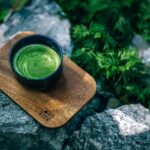A plant-based diet is one of the best ways to support long-term health. However, just because your meals are packed with fruits, vegetables, nuts, seeds and legumes doesn’t mean your body is getting all the nutrients it needs. Understanding how to increase nutrient absorption from plant-based foods is just as important as eating them in the first place.
1. Pair Iron-Rich Foods With Vitamin C
Non-heme iron from plants is less bioavailable than heme iron in animal products. However, there’s an easy fix. Pair iron-rich foods like lentils, spinach, chickpeas or tofu with a source of vitamin C, such as oranges, strawberries, red bell peppers or lemon juice. Vitamin C converts non-heme iron into a form your body can absorb more easily. This pairing can be as simple as adding citrus dressing to a spinach-based salad or snacking on fruit with a handful of nuts.
2. Soak, Sprout and Ferment
Legumes, grains and seeds often contain antinutrients like phytic acid, which can block the absorption of important minerals like zinc, calcium and iron. Soaking these foods for a few hours or overnight, sprouting them or eating fermented versions like tempeh, sourdough bread or miso can help break down those barriers. Fermentation also introduces beneficial probiotics that support gut health, further enhancing nutrient uptake.
Sprouting and fermenting can increase the nutrient content of certain foods. For example, sprouting mung beans or lentils can boost their vitamin B and antioxidant levels. Fermentation can also increase new bioactive compounds, such as vitamin K2 in fermented soy, which isn’t found in unfermented versions.
3. Cook Veggies
Cooking isn’t the enemy of nutrition. Light cooking can make some nutrients more available. For instance, cooking carrots or tomatoes increases their levels of absorbable beta-carotene and lycopene, both powerful antioxidants. However, water-soluble vitamins like vitamin C and many B vitamins can degrade with heat, especially during boiling. A mix of raw and cooked veggies is ideal. Think roasted sweet potatoes paired with a raw kale slaw.
4. Eat More Leafy Greens and Colorful Produce
If you’re serious about learning how to increase nutrient absorption, start by adding to your diet, rather than taking away. Consuming a rainbow of fruits and vegetables and increasing your intake of leafy greens can also reduce your risk of cancer. These foods are high in fiber, vitamins and antioxidants, and their variety supports better gut function and nutrient synergy.
Dark leafy greens like kale and collards provide calcium, magnesium and vitamin K, while colorful fruits and veggies like berries and purple cabbage offer unique phytonutrients that aid overall absorption and health.
5. Add Healthy Fats
Fat-soluble vitamins like A, D, E and K and compounds like carotenoids are best absorbed when you eat them with fat sources. This doesn’t mean you need to load up on oil — just add a modest amount of healthy fats to your meals. Avocados, nuts, seeds, olives, and flaxseed or extra virgin olive oil do the job. For example, drizzle tahini over roasted veggies or add a spoonful of almond butter to your smoothie.
6. Support Your Gut
A thriving gut microbiome is crucial for nutrient absorption. The beneficial bacteria in your gut help break down food and unlock vitamins and minerals that would otherwise pass through unabsorbed. Fiber-rich plant foods feed those bacteria, but you may not get the full benefit if you’re out of balance. Adding fermented foods like kimchi, sauerkraut, kombucha or a quality probiotic supplement can help your body function better and absorb more from what you eat.
7. Minimize Tannins and Oxalates When Necessary
While not harmful in moderation, some plant compounds can interfere with nutrient absorption when consumed excessively. For example, tannins in tea and coffee can inhibit iron absorption if you drink them with meals.
Oxalates, found in foods like spinach, beets and rhubarb, may bind to calcium and prevent your body from using it efficiently. If you’re prone to deficiencies or kidney stones, it’s worth spacing out high-oxalate foods and diversifying your greens. Swap in options like bok choy, arugula or mustard greens.
8. Use Herbs and Spices Wisely
Herbs and spices do more than just enhance flavor — they can boost nutrient absorption, too. For example, black pepper contains piperine, a compound that increases the bioavailability of certain nutrients, including curcumin from turmeric and some vitamins and minerals. Adding turmeric and black pepper together, as in golden milk or curry, is a classic example. Other spices like ginger, cinnamon and cayenne support digestion by stimulating enzyme production and improving blood flow to the digestive tract, making it easier to absorb nutrients.
9. Chew Thoroughly
Digestion starts in your mouth, and how well you chew your food can impact nutrient uptake. Chewing mechanically breaks down food and mixes it with enzymes in your saliva that begin metabolizing carbs and fats. The more you chew, the more surface area your digestive enzymes have to work with later in the gut. It sounds simple, but it’s a crucial and often overlooked part of increasing nutrient absorption. Eat slowly and chew with intention.
10. Consider Supplements
Even the most well-planned plant-based diets may fall short on nutrients like vitamin B12, vitamin D, iodine and omega-3s. Supplements can help fill those gaps and support optimal nutrient status. However, more isn’t always better. A few supplements can actually interfere with the absorption of other nutrients.
For instance, some vitamins and minerals compete for absorption if you consume them at the same time. Calcium can interfere with iron assimilation, so it’s best to take these supplements separately. Zinc and copper can compete as well.
If you’re taking supplements or eating fortified foods, try spacing them throughout the day to avoid these conflicts. This method can significantly increase your nutrient absorption, especially in diets where precision matters. Work with a registered dietitian or health care provider to choose supplements that enhance, not hinder, your diet.
It’s Not Just What You Eat, It’s What You Absorb
You could eat the cleanest, most colorful plant-based meals on the planet, but if your body isn’t absorbing the nutrients, it’s not doing much good. These strategies are simple ways to get more out of what you already eat.
Want to unlock greater wellness?
Listen to our friends over at the Wellness + Wisdom Podcast to unlock your best self with Dr. John Lieurance; Founder of MitoZen; creators of the ZEN Spray and Lumetol Blue™ Bars with Methylene Blue.







 Feeding Your Brain: How a Paleo-Keto Diet Increases Concentration for Student Writing
Feeding Your Brain: How a Paleo-Keto Diet Increases Concentration for Student Writing